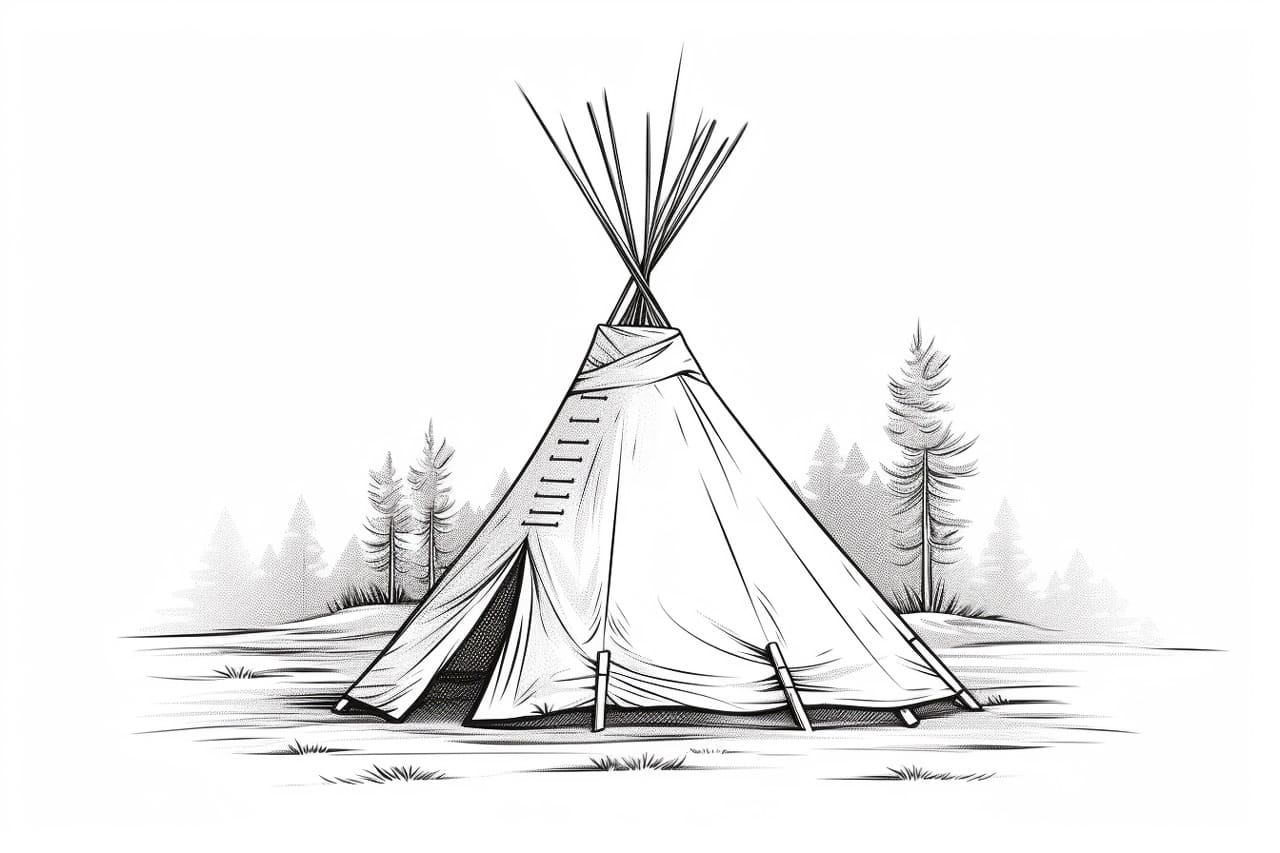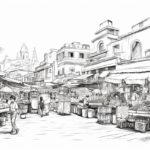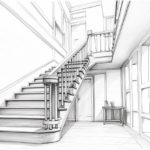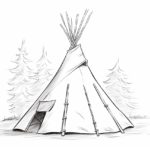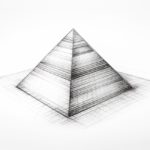Learning how to draw a Wigwam can be a fascinating and rewarding artistic endeavor that allows you to delve into the rich cultural history of Native American tribes. From the intricacies of the structure’s unique design to the symbolism embodied in its construction, capturing a Wigwam on paper can offer a glimpse into a world steeped in tradition and heritage. In this guide, we will explore the key elements and techniques to help you bring this iconic dwelling to life on your canvas, inviting you to embark on a creative journey that intertwines artistry with cultural appreciation. So, grab your pencils, and let’s start sketching a Wigwam that tells a story of resilience, connection to nature, and the enduring spirit of its creators.
Materials Required
To draw a Wigwam, you will need the following materials:
- Paper: You can use drawing or sketch paper for your artwork.
- Pencil: A regular graphite pencil for sketching and outlining.
- Eraser: Correct any mistakes or adjust your drawing.
- Ruler: To create straight lines and measure proportions accurately.
- Colored pencils or markers (optional): If you want to add color to your drawing.
- Reference image: It can be helpful to have a picture of a Wigwam for inspiration and guidance.
With these materials, you can create a detailed and accurate drawing of a Wigwam.:
How to Draw a Wigwam: a Step-by-step Guide
Step 1: Draw the Base of the Wigwam
Start by drawing a large circle on your paper to represent the ground where the wigwam will stand. Then, draw a smaller circle on top of the larger one to represent the base of the wigwam structure.
Step 2: Outline the Frame of the Wigwam
Draw slightly curved lines extending downwards from the top circle to connect with the larger circle. These lines will form the framework of the wigwam structure. Make sure the lines are evenly spaced around the circle to create a symmetrical appearance.
Step 3: Add the Vertical Support Poles
Inside the framework, draw vertical lines from the top of the wigwam down to the base. These lines represent the support poles that hold the wigwam together. Space them evenly around the circle to maintain balance and stability.
Step 4: Create the Covering of the Wigwam
To represent the covering of the wigwam, draw curved lines from the top of the structure down to the base, following the outline of the framework. These lines should overlap slightly to create a layered effect, mimicking the traditional covering of a wigwam.
Step 5: Add Details and Texture
To add depth and realism to your drawing, you can add details such as texture to the covering of the wigwam. Use short, curved lines to create a thatched or woven appearance. You can also add shading to different areas of the structure to give it a three-dimensional look.
Step 6: Final Touches
Review your drawing and make any necessary adjustments to ensure the proportions and details are accurate. Add any additional elements that will enhance the overall composition of the wigwam drawing, such as surrounding nature or a background setting.
Step 7: Optional Coloring
If you add color to your drawing, consider using earthy tones such as browns, greens, and yellows to reflect the natural materials typically used in traditional wigwam construction.
Step 8: Practice and Experiment
Practice drawing wigwams on different scales and from various perspectives to improve your skills and explore different artistic interpretations of this traditional structure. Experiment with other techniques and styles to make your wigwam drawings unique and expressive.
Conclusion
Fantastic job on drawing the Wigwam! Your attention to detail and creativity truly shine through in this piece. Keep exploring different subjects and styles in your artwork, and remember that practice makes perfect. Your dedication to your craft is evident, and I have no doubt that you will continue to create beautiful and inspiring pieces. Keep up the great work!
Fun Facts About Wigwams
- Wigwams are traditional domed dwellings historically used by various Native American tribes across North America.
- “wigwam” comes from the Algonquian language, specifically the Abenaki tribe, and means “dwelling place.”
- Wigwams are typically constructed using a framework of wooden poles covered with bark, grasses, reeds, or mats for insulation.
- The shape of a wigwam is designed to be sturdy and withstand strong winds and heavy snow loads.
- Wigwams are often built in circular or oval shapes, symbolizing harmony and unity within the community.
- The entrance to a wigwam is usually low and narrow, requiring individuals to bend down to enter, which helps to retain heat inside the structure.
- Wigwams are portable structures, allowing Native American tribes to easily dismantle and relocate them as they followed seasonal hunting patterns or agricultural cycles.
- Traditional wigwams did not have windows but featured a central smoke hole in the roof to allow smoke from the central fire pit to escape.
- Wigwams were often decorated with intricate designs and symbols that held cultural and spiritual significance for the tribe.
- Today, wigwams are still used for ceremonial purposes, cultural events, and educational purposes to showcase Native American traditions and craftsmanship.
Suggestions for Scenes and Settings for Wigwam Drawings
- A serene, peaceful lakeside setting with a wigwam nestled among tall pine trees.
- A bustling Native American village with multiple wigwams of different sizes and designs.
- A snowy winter landscape with smoke rising from a cozy wigwam.
- A sunset scene with a wigwam silhouetted against a colorful sky.
- A summer campsite with friends gathered around a bonfire before a wigwam.
- An aerial view of a vast plain dotted with wigwams of a nomadic tribe.
- A mystical scene with a wigwam surrounded by ancient standing stones and a full moon overhead.
- A modern interpretation of a wigwam as a sustainable, eco-friendly home in a lush green setting.
- A historical reenactment with people dressed in traditional clothing going about their daily activities in and around a wigwam.
- A fantasy setting with a magical floating wigwam in a whimsical landscape filled with colorful plants and creatures.

